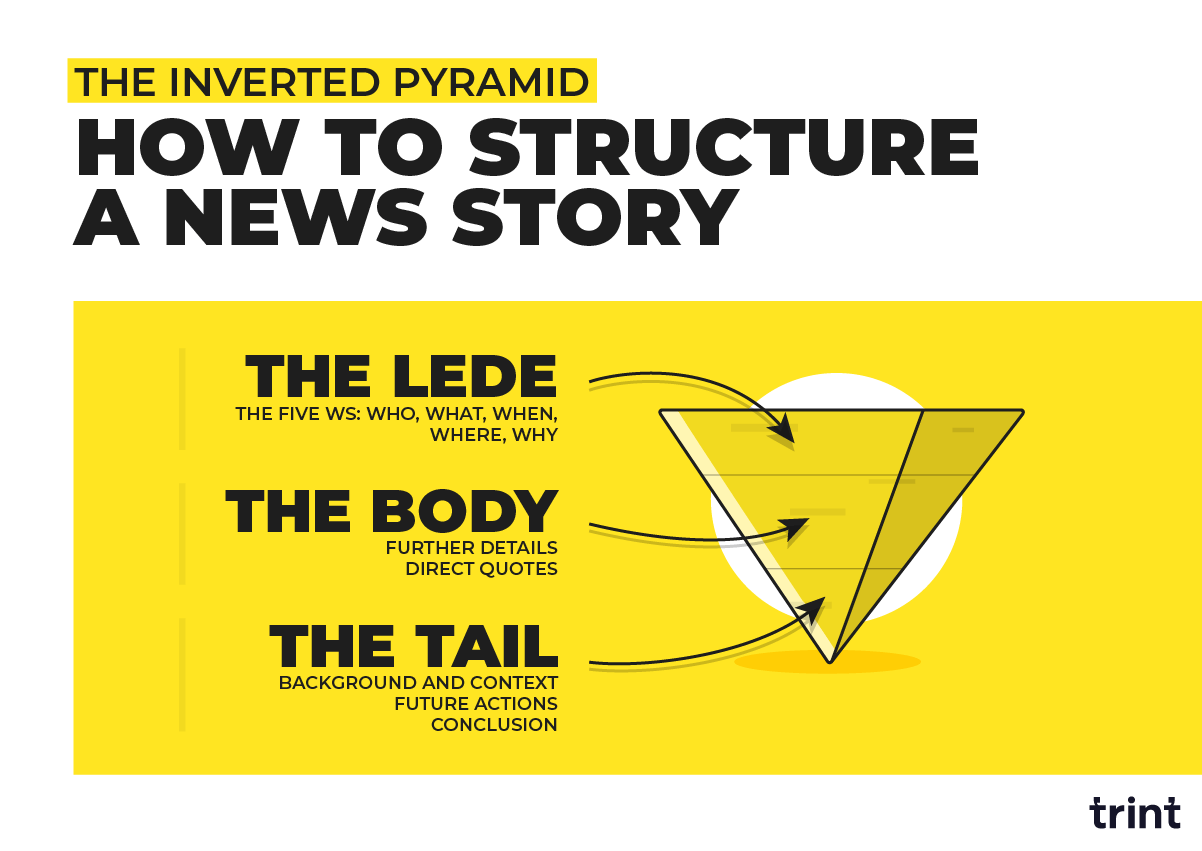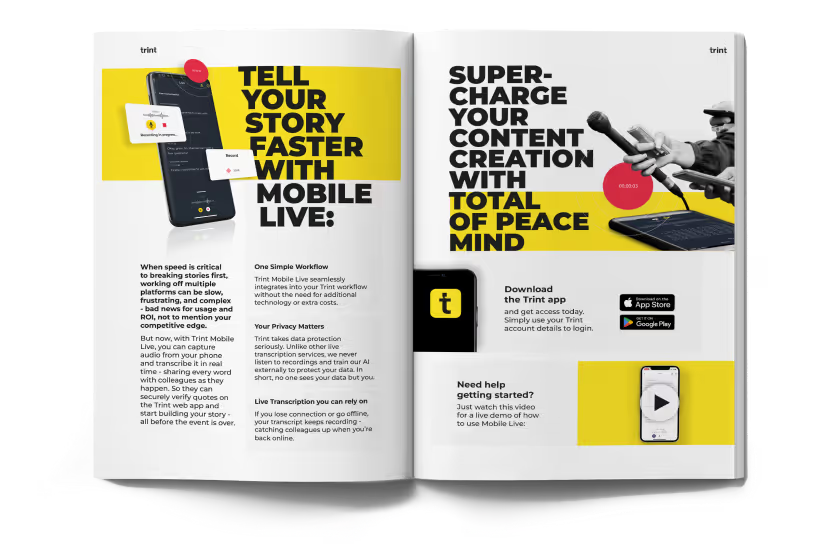
Few concepts in journalism are as iconic as the Five Ws: who, what, when, where and why. This simple checklist ensures that all the key elements of a story are at the front and center from the start.
In this article, we'll take a deep dive into the Five Ws — and the occasional H — of writing, explaining what they are, who uses them, why they matter and where they come from. (See what we did there?). We’ll also share some tips on using the Five Ws and the inverted pyramid structure to sharpen your writing technique.
What are the five Ws of writing?
'Who, what, when, where and why' is a framework used by many journalists to help them communicate the key details of a story effectively. By following this checklist, they can be sure that the most relevant information is included in the lede (first sentence) of an article.
- Who is the story about?
- What happened?
- When did it happen?
- Where did it take place?
- Why did the story occur?
- How did the events in the story come about?
The five Ws and one H are sometimes also called the Six Honest-Serving Men. This is a reference to a verse from Rudyard Kipling's Just So Stories (1902):
I keep six honest serving-men
(They taught me all I knew);
Their names are What and Why and When
And How and Where and Who.
Today, the Five Ws are so prevalent in news media that many people don't even notice that they're there. But, chances are that if you look up the last news article you read, you'll find those 'honest serving men' hard at work in the opening lines.
The five Ws are used for more than just writing, too. Many reporters and journalists will use them as a checklist when following a lead to help make sure they're thinking critically and aren't overlooking any key details.
The five Ws aren't just used by journalists, either: they can be used by professionals of all stripes to help them communicate more clearly or solve problems.
Where do the five Ws and one H come from?
The five Ws have been used in news articles since the early 1900s and are still taught in many journalism classes to this day. However, the concept of the five Ws may outdate even the first printing press.
Back in the 1st Century BC, Hermagoras of Temnos defined seven 'elements of circumstance' that sound very similar to the five Ws and one H we know today — although he threw in one more W for good measure ('by what means'). We think that might be overkill, though.
Why do journalists use the five Ws?
Journalists use the five Ws because they provide a quick and easy framework for writing clear, effective news stories. It gives structure to the story and allows the narrative to unfold in a logical, easy-to-read way.
You can see the five Ws at work in this lede for a (fictional) local human interest piece:
John Smith, a Townsville baker at Apple Drop Cakes on West Avenue, has gained over 1.5 million followers in just over six months by sharing his celebrity portrait cakes on TikTok.
Let's break that down:
John Smith, a Townsville baker [who] at Apple Drop Cakes on West Avenue [where], has gained over 1.5 million followers [what] in just over six months by [when] sharing his celebrity portrait cakes on TikTok [why].
Here, the five Ws give the reader everything they need, setting the stage for the rest of the article to build out the context. For example, the journalist might explore how John Smith is adjusting to his newfound fame, or reveal which celebrity he's planning to bake next.
When the five Ws framework isn't used, the reader may struggle to follow the story and become frustrated. We've probably all fallen victim to clickbait before: where you follow a link to a story, only to be confronted by an irrelevant wall of text, with the info you actually want buried right at the bottom. This is also known as 'burying the lede'.
While some publishers will use this trick on purpose to harvest clicks and maximize ad revenue, this comes at the cost of reader loyalty and engagement. After all, no one likes having their time wasted. If you frustrate the reader with a poorly structured news story, they may give up on your article and go seek an alternative news source.
In a fast-moving digital news landscape, the reader's attention is a precious thing. So, don't waste it: use the 5 Ws to create compelling content that meets their needs quickly and encourages them to keep reading.
The inverted pyramid

To structure a news story effectively and gain reader engagement, journalists often combine the five Ws with the inverted pyramid structure. This approach organizes content from the most critical information to the least, allowing readers to quickly grasp the essential details while leaving supporting information for those who want more depth.
This way of telling stories is particularly effective in the digital age, where attention spans are often short and readers appreciate concise updates.
Here's how it breaks down.
1. The Lede
What is it? The lede (or lead) is the opening sentence or paragraph that provides the most vital information of the story. It's also sometimes called the 'deck'.
Purpose: To immediately grab the reader’s attention and convey the crux of the story. This section answers the five Ws (who, what, when, where, why and sometimes how).
Example: "A Townsville baker, John Smith of Apple Drop Cakes, has gained viral fame by sharing celebrity portrait cakes on TikTok, attracting over 1.5 million followers in just over six months."
2. The Body
What is it? The body includes additional important details that support and elaborate on the lede.
Purpose: To provide context, background information and explanations. This part should answer any remaining questions from the five Ws and give a deeper understanding of the story.
Example: "Smith, who started posting his creations in March of this year, has captivated viewers with his highly detailed cake portraits. His most popular bake to date — a cake in the likeness of Taylor Swift — has amassed over 20 million views in just three months."
3. The Tail
What is it? The tail is the final section that includes the least crucial details, like non-essential follow-up information, quotes or an interesting fact.
Purpose: To provide closure and resources for further reading. If space or time is limited, this section can be trimmed without affecting the main points.
Example: "Smith hopes that his videos will encourage his followers to try their hands at baking cakes at home. He also plans to grow his business by launching virtual cake-decorating workshops for his fans across the globe."
The Five Ws (and one H) provide a powerful framework for clear, structured storytelling, ensuring you hit all the key points right from the start. Check out our glossary of journalism terms to brush up on other essential industry lingo.
When it comes to fast, efficient content creation, AI transcription tools like Trint are game-changers. Our platform allows you to effortlessly transcribe audio, video and speech to text and helps you find and organize key details at lightning speed. By combining great writing tactics with cutting-edge tech, you can deliver clear, engaging content faster than ever — exactly what today's readers want. Explore Trint with a free trial today.

DON'T take our word for it
Download our eBook, Telling Stories Faster With Trint, and hear how Trint is making content creation faster, easier and, most importantly, painless for newsrooms across the world.
Download








